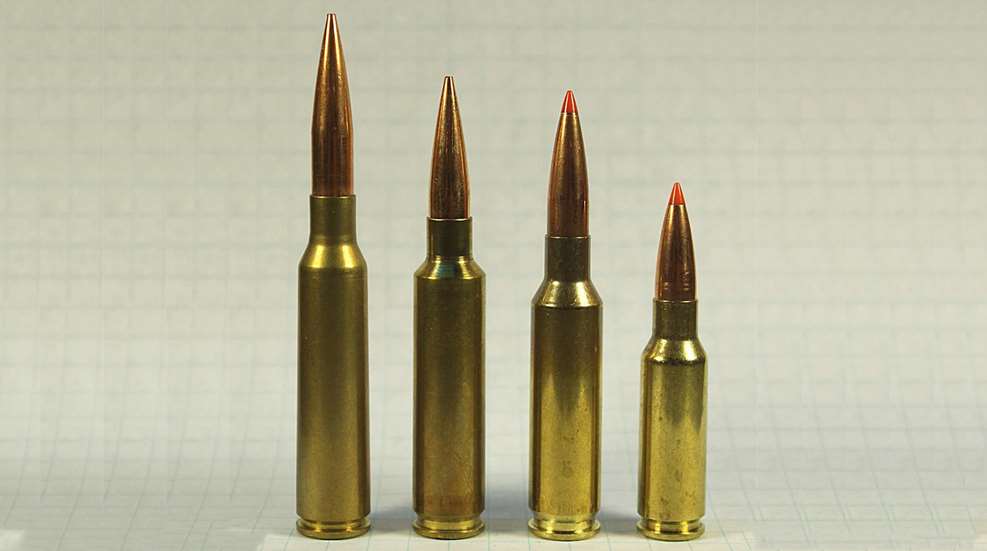
Above (l. to r.): Dressed for competition, the old Swede shares 6.5 company with youngsters 260AI, 6.5 Creedmoor and 6.5 Grendel.
Let’s put this to rest right here at the beginning: if we were considering the best cartridge for As-issued rifle competition, the .30-′06 would wins hands down on sheer popularity in being chambered also in Garand, Springfield, Johnson and M1917 rifles. But among these the CMP classifies only the M1917 as an As-issued Vintage Military Rifle; and, besides, if we choose a best cartridge based only upon popularity, it doesn’t leave us much to talk about, so let’s consider other criteria in defining, “best VMR cartridge.”
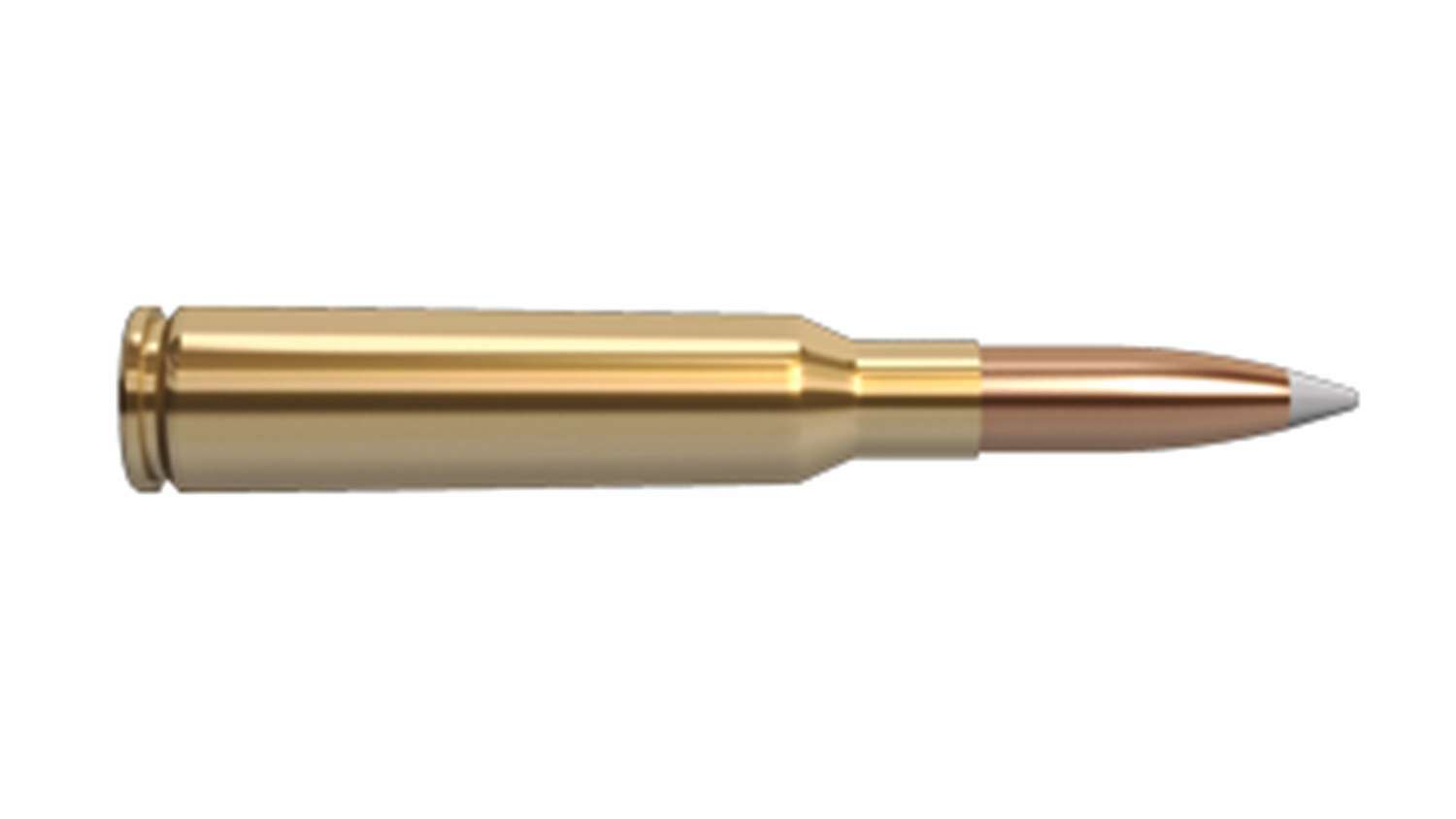
To do that, we’ll first have to define the Vintage Military Rifle, which we do by consulting the CMP rulebook. Herein we find it is a foreign bolt action rifle that was in general issue to troops, plus the U.S. Krag-Jorgenson and M1917 rifles used by the American military. Springfield rifles are by far the most popular milsurp bolt gun at CMP As-issued matches, but they have their own category and competition separate from the foreigners, hence our exclusion of the .30-′06 cartridge here. We can also exclude the various 7 mm and 8 mm Mausers, and the other “oddball” .30 calibers, as we’ll see. So, what’s left?
The Swedish 6.5x55 mm. Listed below are five reasons why.
1) Rifles are common and high quality
If we blinker ourselves by looking only at the cartridge, we aren’t being realistic. No matter how many positive aspects the cartridge owns, it requires an equally capable rifle to make it the “best.” So, to answer this question pragmatically, we must also consider the launching platform.
Few shooters disagree that the Swedish Model 1896 and Model 38 rifles exhibit the highest quality of workmanship among foreign military bolt guns. A few others can match it, but few were made in the quantities and consistent quality that make the Swedes so common and popular here today. The Swede’s only limitation is minor―the rear sight lowest setting is 200 meters, meaning we can’t use a six o’clock hold in 100-yard competition. But that’s easily remedied with the simple installation of a taller front sight, which is competition-legal and available from Brownells.
The Swede’s cartridge, the 6.5x55 mm, earned its reputation for inherent accuracy; at 126 years of age, it is the oldest smokeless powder cartridge still popular in both competition and in hunting, especially in Europe. And if we consider the bullet alone, the 6.5 mm has seen a tremendous surge in popularity among competitors and hunters in the U.S. with the recent advent of the 6.5 Creedmoor cartridge. There are other VMR 6.5 mm cartridges, such as the Dutch 6.5x53R, Italian 6.5x52 Carcano and 6.5x50 Japanese, but their rifles are so lacking in desirable characteristics that they rarely, if ever, appear at matches.
2) Factory ammo is readily available …
While this factory factor is of little importance to the handloader, it is the first point for the non-handloading shooter to consider, for obvious reasons. Happily, the popularity of VMR games has prompted manufacturers to turn out plenty of ammunition suitable for most of the old rifles. Hornady goes a bit further in making match grade ammo, their Vintage Match line, in the most popular cartridges: 7.62x54R, 8x57JS, .303 British and, of course, 6.5x55. As SSUSA reported earlier several other ammo manufacturers also cater to the VMR shooter in producing new, quality ammunition on Boxer primed brass cases. The 6.5x55 Swede is, in fact, a staple from every maker who offers VMR cartridges.
3) … and so are reloading components
Buying and shooting Boxer primed ammo is great for both instant shooting gratification and for making brass for reloading. Most of our resources for brass in other calibers―Hornady, Lapua, Nosler, Norma and Winchester, among others―also offer 6.5x55 brass at prices comparable to popular American cartridges. Our regular go-to powders such as IMR 4064, IMR 4895 and Varget work fine in the 6.5x55 and it’s the very rare reloading manual that doesn’t include data for this cartridge.
All military variants of the Swedish Mausers―M94, M96, M96-38 and M38―have rifling twist rates of 1:7.5″ or 1:7.9″, often simplified in print as 1:8″, sufficient to stabilize early skarp patron m/94 156-grain bullets, as well as the later 139-grain bullet. This gives us wide latitude in selecting 6.5 mm bullets for handloads, of which there are plenty, thanks again to the recent interest in the sexy 6.5 mms. All-in-all, the 6.5x55 Swede today is as readily reloadable as our all-American .30 calibers.
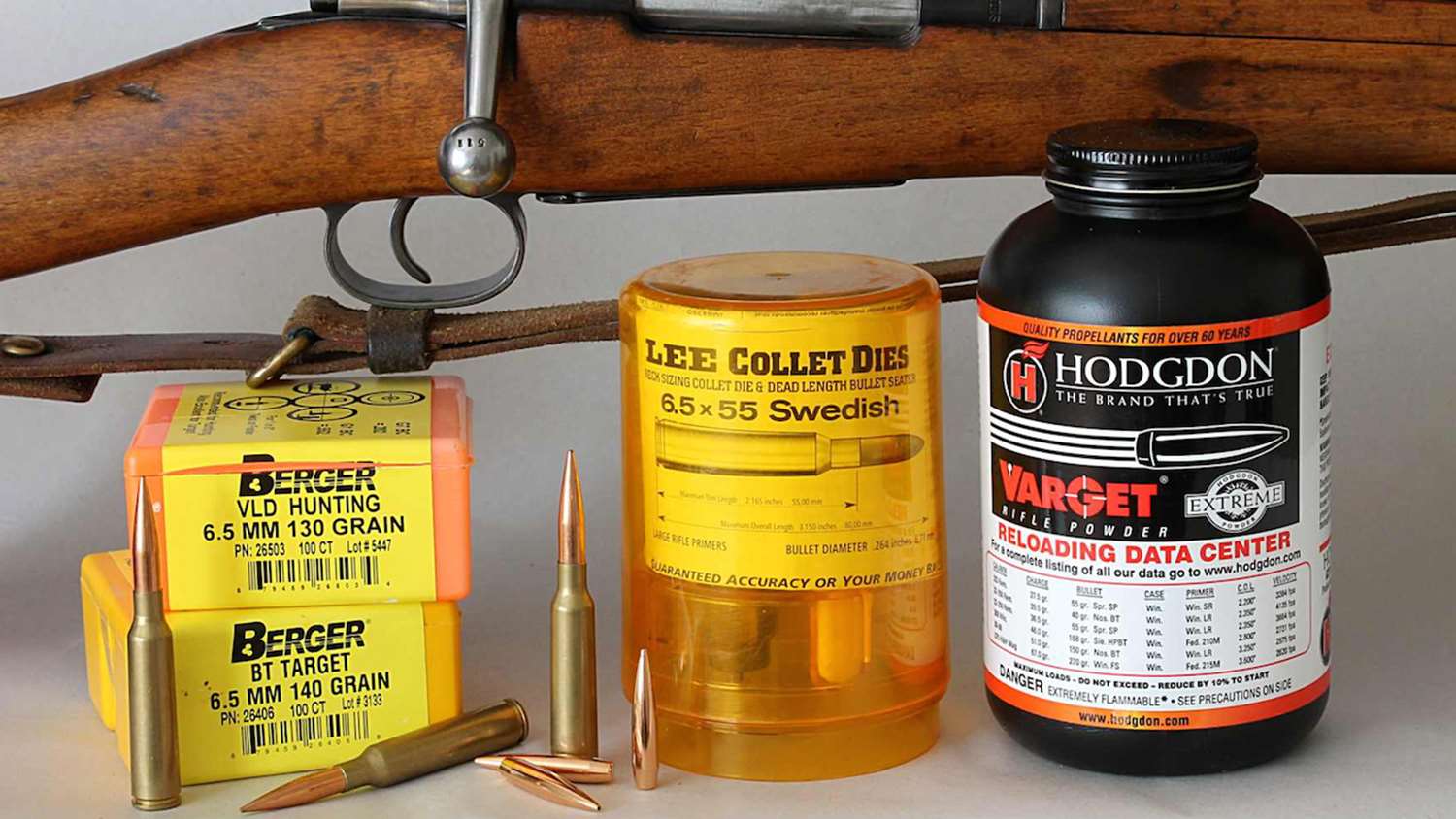
Compared to the 6.5, there are few choices in 7 mm and even less in 8 mm FMJ or match grade bullets at prices that permit affordable competition. Nearly all 8 mm bullets are intended for hunting performance and typically costs 65¢ to a dollar per bullet. Among VMR cartridges, only the .30 calibers have more bullet choices than the 6.5x55.
So, why not the “other” .30 calibers, the 7.62x54R Russian, 7.5x54 French and 7.5x55 Swiss cartridges? For the Russian, one word: recoil (see below). The MAS 36 rifle for the French cartridge is not as prevalent as the Swedish Mausers, and we don’t see many at the VMR matches. And while typical MAS 36 will shoot about 4 MOA, the Swedes typically do better. The Swiss K-31 firing the 7.5x55 round has a reputation for workmanship and accuracy comparable to the Swede but, again, its popularity doesn’t come close to that of the Swedish Mausers. That’s possibly because the K-31’s left-mounted sling tends to roll the rifle to the left when using the sling in sitting and prone positions, many shooters find the long travel of the straight-pull bolt hard to adjust to, plus one other reason discussed below.
The .303 British cartridge is not a true .30 caliber, its nominal .311″ bullet diameter falling between the .30’s .308″ and the 8 mm’s .323″. The .303 British has been on American gun shop shelves for more than 100 years, milsurp No.1 and No.4 SMLE rifles are quite popular and we do see a fair number of them at VMR matches, but they don’t have a reputation for target precision. They can be modified to shoot accurately as sniper rifles, but such modifications aren’t permitted under CMP VMR As-issued rules.
The 7.7x58 mm Japanese Arisaka is comparable to the .303 British in both bullet diameter and performance, but its Type 99 rifle, branded with a perception of “clunkiness,” is absent from competition.
4) Recoil
Theoretically, the 6.5x55 mm produces less recoil than the .30 caliber and 8 mm cartridges chambered in most other military bolt guns. Theory is borne out in practice only by the individual, as perceived recoil is a very subjective thing. And a rifle’s stock design and ergonomic features have a lot to do with how hard-kicking a rifle feels. Still, most who have fired both a 7.62x54R Mosin-Nagant and a Swedish Mauser will agree that the Russian is a bit more punishing. Whereas one or two rounds may be inconsequential regardless of recoil tolerance, a 30- or 50-round VMR match can get plenty of shooters anticipating recoil and flinching before the shooting is over.
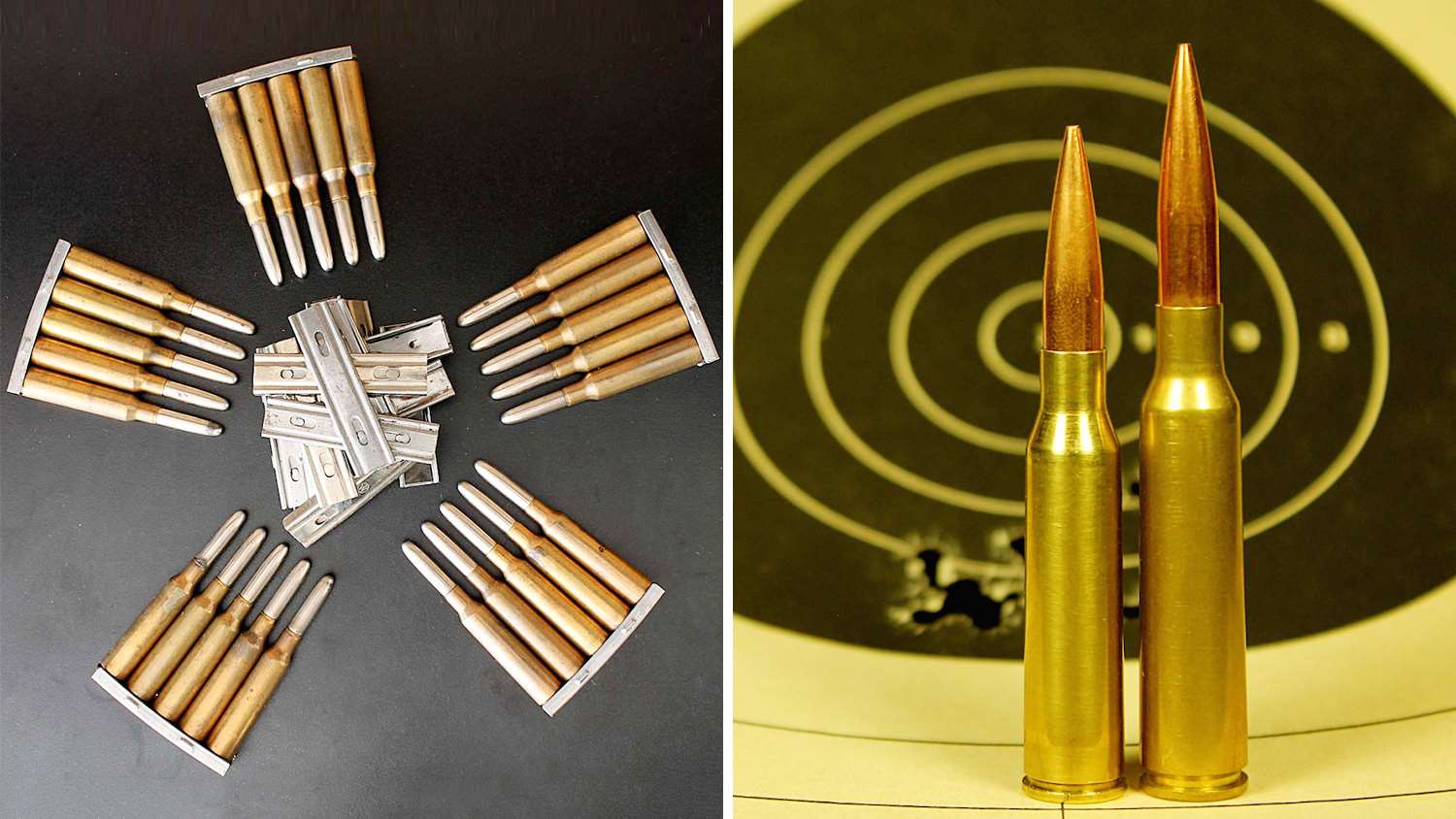
The 6.5x50 mm Japanese cartridge has even less recoil in its Type 38 rifle than the 6.5x55 Swede in its M38, and the Japanese 6.5 has acceptable short range accuracy but, like its brother the Type 99, it has not caught on with VMR shooters.
5) Stripping and charging
What about chargers or stripper clips? Without them, single-loading five fresh cartridges during a rapid fire string eats up a lot of the 70 or 80 seconds allotted to get 10 shots downrange. Just a little bit of fumbling can leave us raising our hand when the match director calls, “Any saved rounds?” after the clock runs out.
Unlike with most other European cartridges, we can sometimes convince common 7.62 NATO stripper clips for the M14 to work well enough with the 6.5x55, and original Swedish milsurp stripper clips are still available for the Swedish Mausers; one major resource is Numrich. At $1.70 each, it’s smart to get a handful as small necessities like these often seem to grow legs and walk away. This charger/stripper clip matter applies to all VMRs, and the longer we wait the less available chargers become, then prices get ridiculous when they’re all gone.
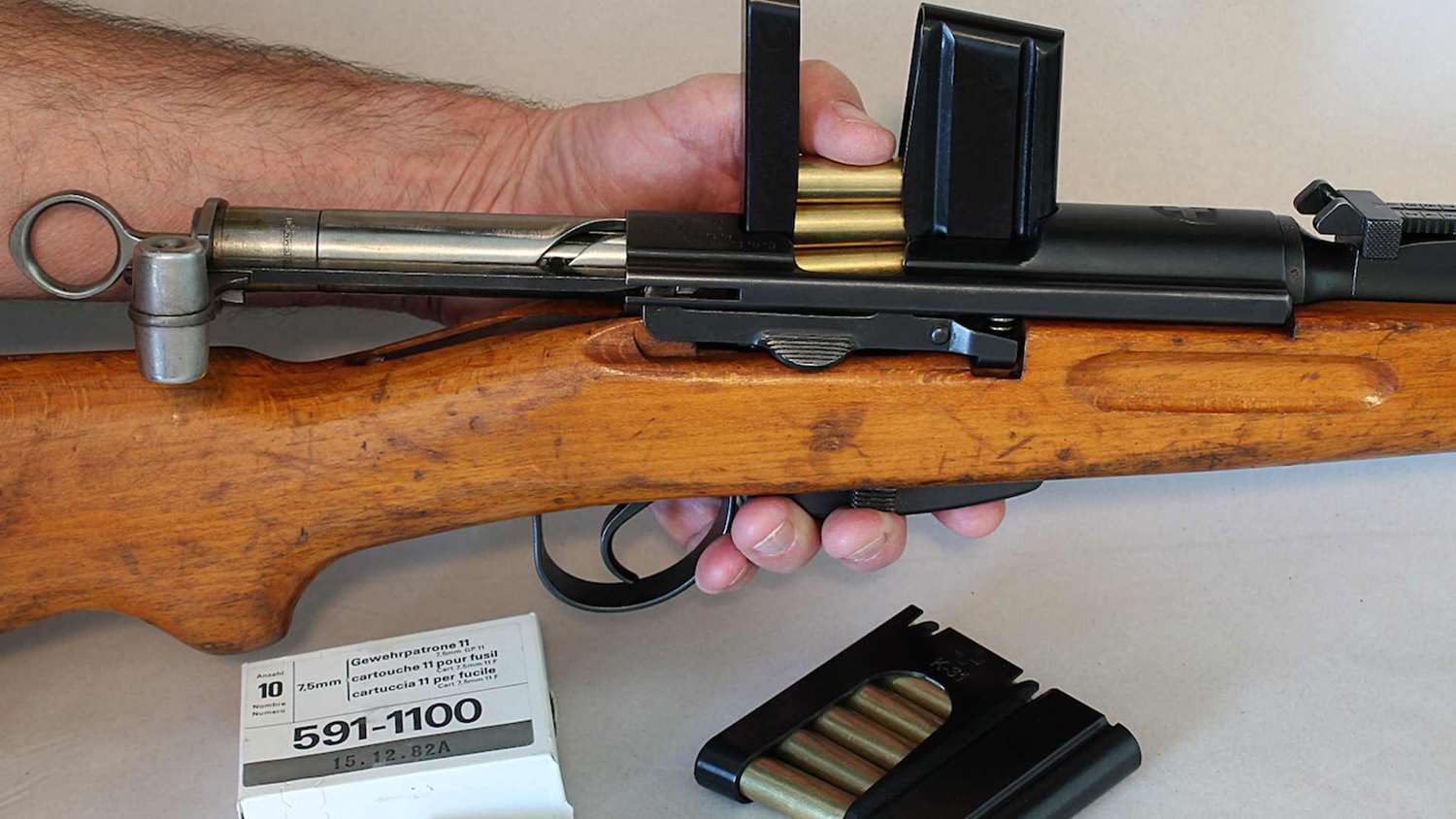
There is a potential challenger to the 6.5x55 mm for the title of best VMR cartridge. Almost paradoxically, one of the most accurate and fastest-cycling quality VMR competition rifles, the Swiss K-31, is not more prevalent at matches perhaps in part because the chargers have been an issue. The Swiss made original chargers from what appears to be a kind of lacquered pressboard and thin metal. They were not intended to be reused and so they don’t last. Now priced around $25 each, they’ve fallen into the “ridiculous” price category. Reusable polymer chargers from Northridge, Inc. have hit the aftermarket, the price $25 a pair―and two is just what we need for a match. Coincidence? As the word gets out, perhaps we’ll see more K-31s at future VMR competitions.


































